Last weekend the place where I work took the staff (there's only ~10 of us) on an overnight trip to Košice as a sort of company outing. You may recall that
Terezia and I went to Košice back in early May and had a nice weekend there, but a few things were closed and/or not accessible, like St. Elizabeth cathedral's clock tower (grrrr!), the "old" synagogue, and the Kunsthalle and Kulturpark, which were designed for Košice's hosting of the European Capital of Culture 2013, but whose completion was delayed. Luckily for me, all this stuff was open this time, and so I was able to cross a few more things off my list.
Last time, I got a little bent out of shape about the cathedral's bafflingly uncompromising opening hours, which prevented us from being able to ascend the clock tower (the tower closed on Saturday at 1 PM and was closed all day Sunday). Apparently, in early May, their more flexible summer hours hadn't kicked in yet, but apparently their summer hours were still in effect in mid-September. Not only did we climb the tower, but we got a tour (in Slovak only, of course) of the place given by a slightly insecure but overly ernest girl who appeared to be about 19 years old. She took us down into the church crypt, up the
double-helix staircase which leads to a kind of balcony containing some medieval wooden sculptures or relics that pilgrims used to be interested in, and then into the chapel next door.
As expected, the views from the tower, while not exactly mind-blowing, nevertheless allowed one to get a sense of the size and scale of Slovakia's second largest city, and was absolutely worth the climb.
 |
| At the top of the cathedral's clock tower, facing north, with the State Theater and singing fountain below |
 |
| Looking south |
 |
| Facing east: Notice all the panelaks that line the hillside in the distance. |
I was also excited by the fact that the
scrappy looking scaffolding that covered up nearly half of the facade - including the cathedral's shorter, south tower - back in May, was totally gone, so I got to enjoy the beautifully ornate facade in its entirety.
I mentioned this in my last Košice post, but it bears repeating: this cathedral is, hands down, the most beautiful church in all of Slovakia, and really just about the only remaining gothic cathedral in the whole damn country. There are a few other medieval-ish churches here or there, like
Hronský Beňadik or Bratislava's St. Martin's, but most gothic Slovak churches (those that weren't destroyed) were typically given goopy baroque makeovers, and although some were then given yet another makeover in the neo-gothic style, they're not authentically gothic, and none are (or ever were) as attractive as Košice's cathedral. This thing is seriously unique. It's also the easternmost gothic cathedral on the continent of Europe. Head eastward and it's all Eastern Orthodox or baroque.
Readers may also recall my bit about the ECOC cultural centers not being ready in time for the ECOC 2013, as in May these were still very much under construction and appeared as if they had at least a few months to go before opening. They finally did open sometime in July, and we got to see both.
The Kunsthalle was built out of a disused indoor public swimming pool. Ground water from a river that was only partially re-routed caused the pool's foundations to crumble, and the whole building probably would've been demolished were it not for someone's idea to renovate the thing and turn it into a cultural center/art gallery. Of course, that renovation was more like a reconstruction, and it apparently cost a whopping €7 million in EU funds. The swimming pool is still there, but it is now only about 23 centimeters deep, and when we were there it was completely covered by this modular thing you could walk on, on top of which were a few "art" pieces.
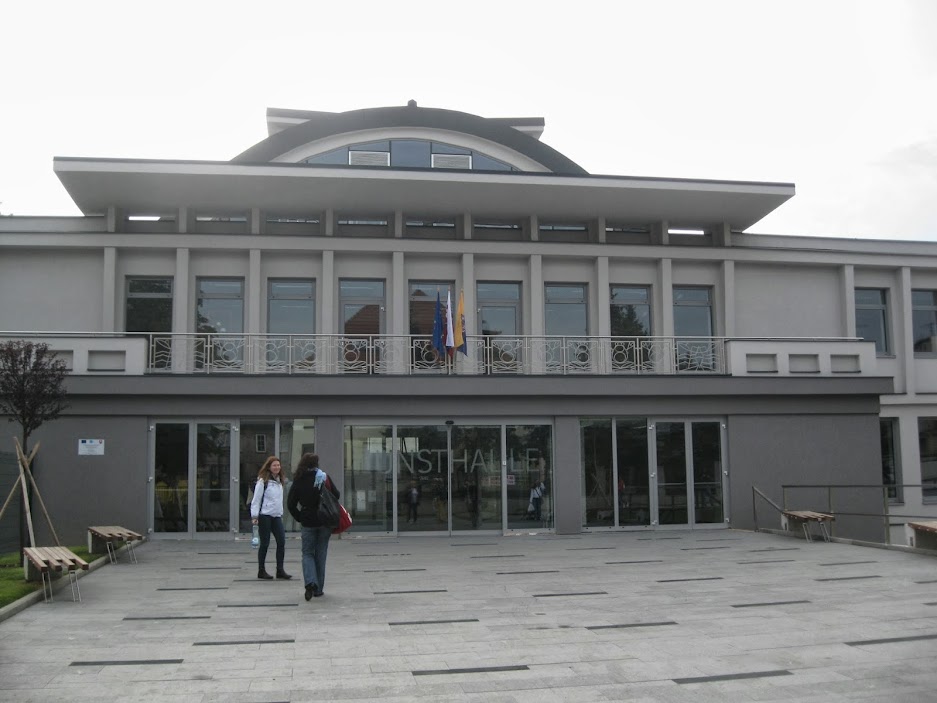

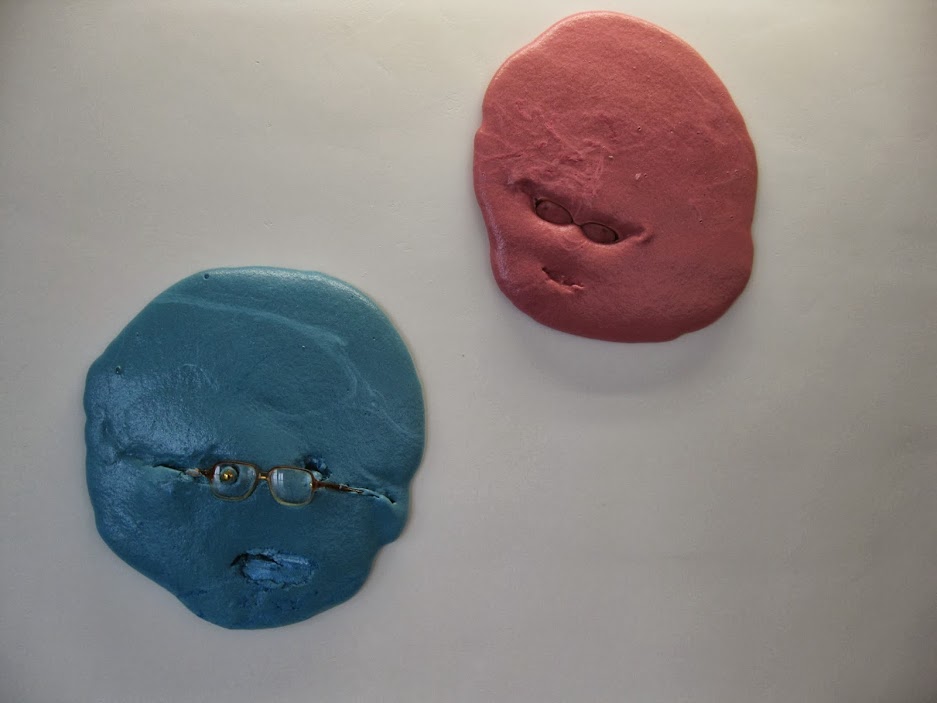
The space itself, while not huge, is quite nice as an art gallery, with lots of diffused natural light and a nice, spacious feel. The art that was on display when we were there, however, was strictly of the uber-modern variety, and most of it wasn't particularly interesting, save for a few photographs. All or most of it was local, however. The consensus among my co-workers seemed to be that, yeah, it's a nice enough space, but damn, was this really worth €7 million, especially given how many more pertinent things that kind of dough could fix in this country?
The Kulturpark, kind of at the other end of town, was constructed out of a bunch of abandoned, old military barracks. Now the grounds consist of a park that is open to the public, while the old barracks have been renovated into spaces for theatrical and music performances, art galleries, art and dance studios, and cultural center offices, among other things. Naturally, there seems to be a bit of bureaucratic confusion over exactly how these buildings are supposed to be used and for how long (something about the cultural center and the city not always seeing eye to eye, particularly over how EU funds are to be used, if I understood correctly), but for the time being they've got a series of events lined up.
Both centers are basically there to foster local art, and at least ostensibly, there is the aim to get locals involved as much as possible. Hopefully these things will be able to continue functioning.
As for the ECOC 2013, at least the city was able to get this stuff done before the year's end. The ECOC is really just a way to boost tourism by pumping EU funds into kind of overlooked or off-the-beaten-path cities that want more tourism revenue. I don't know how successful it is in the long run (probably depends on whether a city is truly an undiscovered gem or a dump), but I do think Košice is worth seeing for a couple days if you're
really interested in Slovakia and/or visiting places that aren't on the well-trod tourist path. If they can get some direct flights to the airport there (shockingly, they failed to iron out an agreement with a budget airline prior to 2013), that alone would probably increase tourism in Košice.
We also got to take tours of two of the city's four remaining synagogues (one is actually now a music hall for the local orchestra, and another had been converted into a lab, so they're no longer synagogues anymore), the "old" one and the "new" one. The "new" one is still in use, but only for special occasions, like holidays and such, as there aren't enough practicing Jews in Košice to warrant using it every week. There is a small, old building next to the "old" synagogue that's used for normal weekly services.
Košice was once home to a healthy Jewish population (over 11,000 at its peak in the 1930s), but most were deported and killed in WWII. Only a small number came back and stuck it out through communism, and today there are around a couple hundred Jews living in the city (Bratislava only has about 400-500, so ~200 for Košice is not too surprising, even though it is a staggeringly low number).
The "new" synagogue was built in the 1930s and was designed in a style that was considered quite modern at the time. It was recently renovated and the interior really pops.
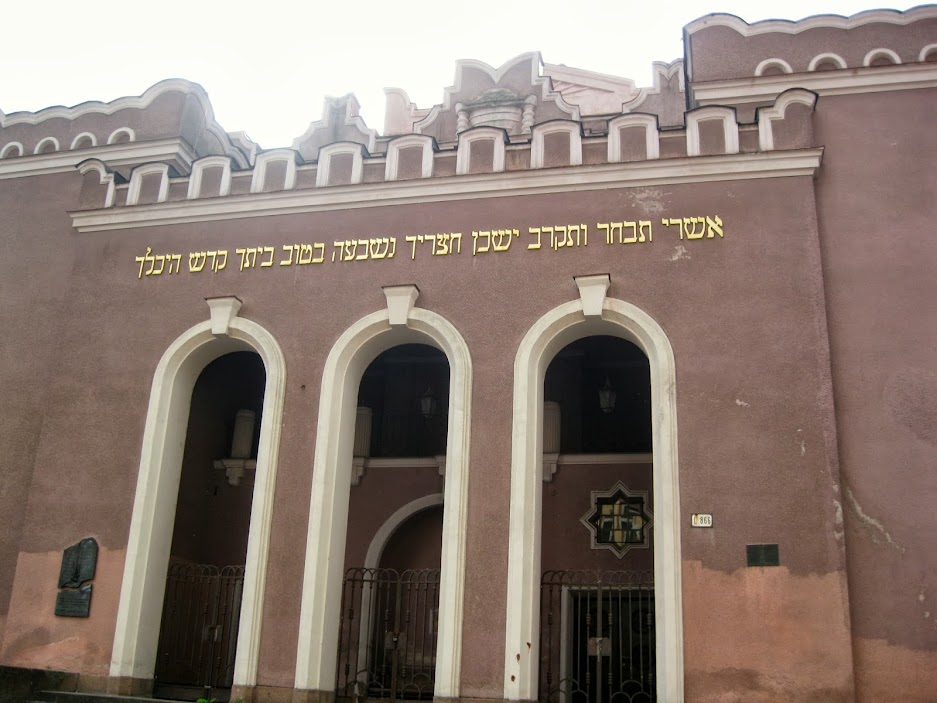 |
| The "new" synagogue's facade |
The "old" synagogue is a few blocks closer to the main square and sits in the middle of what was once the old Jewish ghetto. It was built in the late 1800s. The communist regime used it as an archives storage facility and let it fall into disrepair. The exterior was recently given a much-needed makeover, but the interior is still pretty rough (but in a romantically dilapidated way). The floor is just loose rocks and gravel. The geometric, Moorish patterns painted on the walls are wildly beautiful, and the architectural details are pretty stunning. This synagogue is now used occasionally as a space for temporary art exhibitions. There's nothing happening there right now, but over the summer there was an exhibition of Slovak-Canadian photographer Yuri Dojc, who actually has Jewish familial roots in Košice.
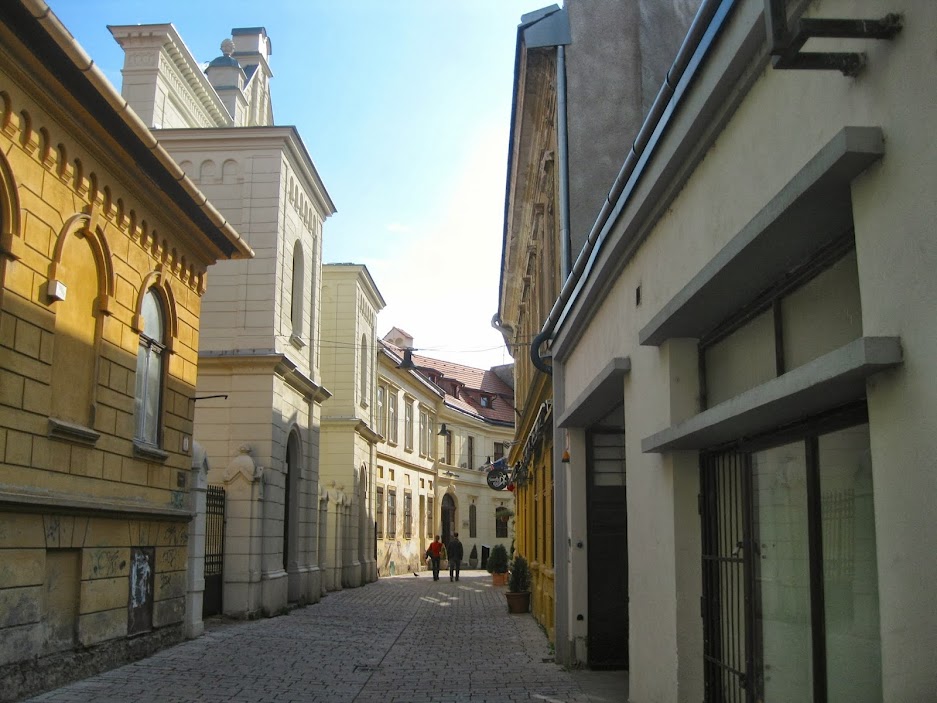

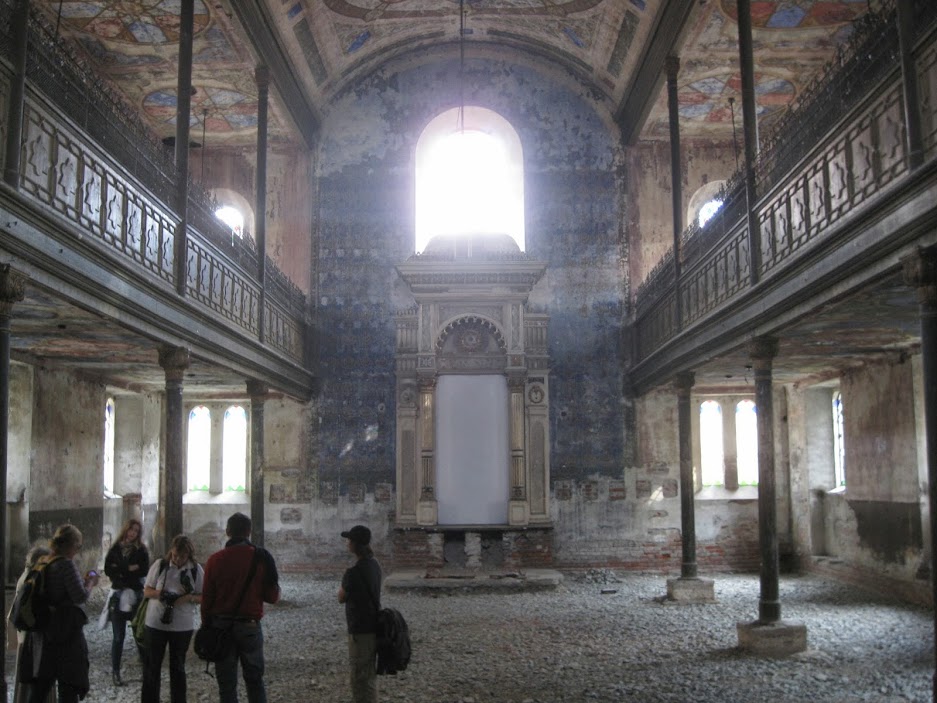
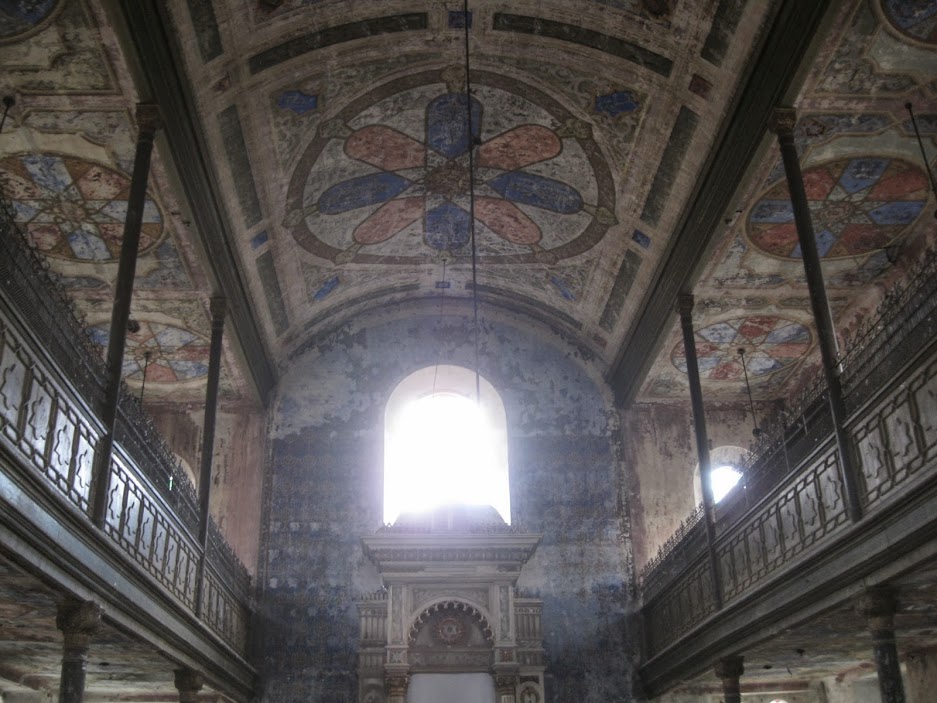
Of course, this post wouldn't be complete if I didn't mention what happened to this poor mural. The city commissioned a group of Ukrainian artists to paint the mural a few years ago, and this group has done similar murals in other, more prominent European cities, so it was kind of a big deal that they came to Košice to do this. However, in mid-summer, a city work crew showed up out of the blue one morning and started painting over it. Alarmed locals immediately thought the city had decided to cover the thing up without letting anyone know, but city hall was as mystified by the whole thing as anyone else and insisted they had nothing to do with it. They opened up an investigation to find out who, exactly, was behind defacing this thing, since, in typical Slovak fashion,
no one seemed to know who was responsible! Not sure if they've made any progress with that, but hopefully they'll be able to fix it somehow. A tiny bit more info
here.
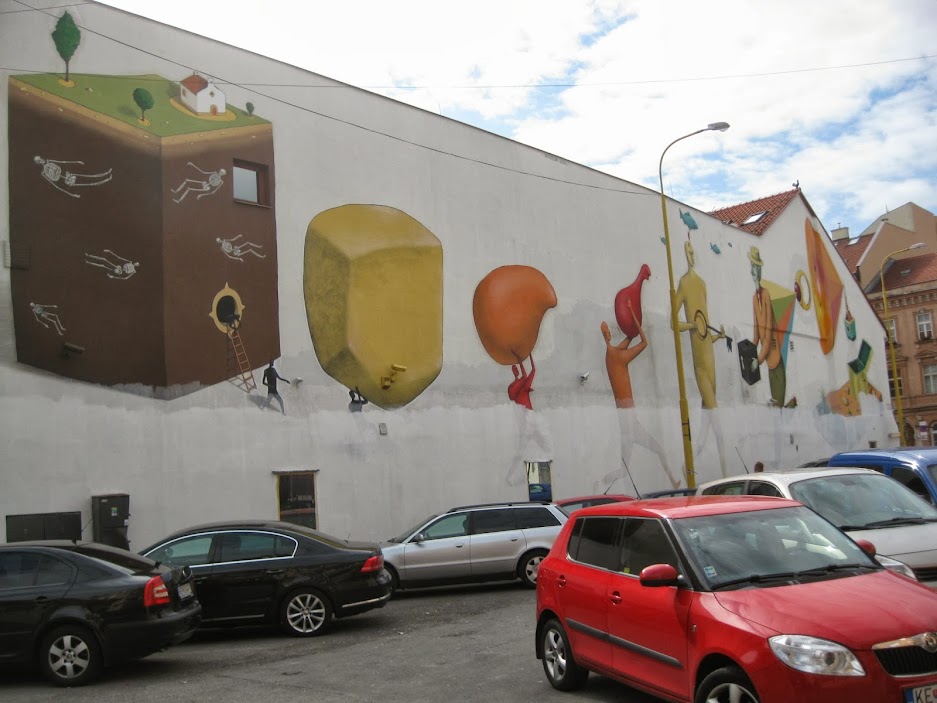 |
| Only in Slovakia! |
Overall, Košice definitely has a certain charm and a pleasantly laid back vibe. It has an attractive and fairly lively old town with one of the best public squares in the country, and like I mentioned in the last post, the local university community seems to inject the place with a bit of youthful energy. I wouldn't pass up any future opportunities to go there again for a day or two.